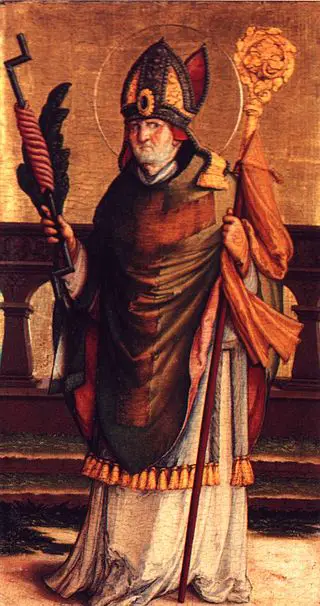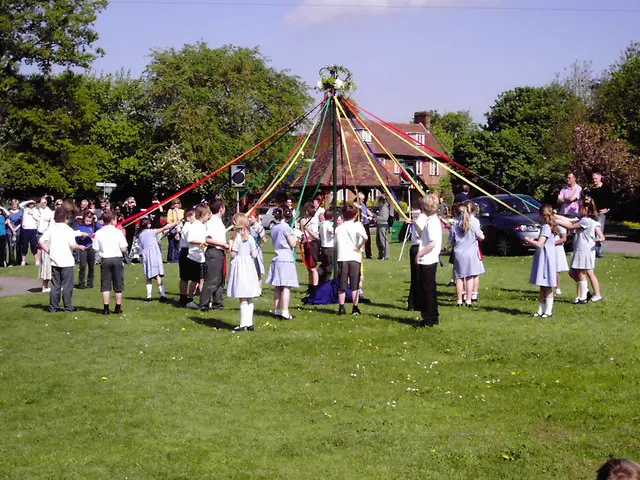Rogationtide and Ascension Day
Rogationtide (from the Latin rogare: ‘to ask or beseech’) is the three days leading up to the Feast of the Ascension, which is celebrated forty days after Easter Sunday and which commemorates the Ascension of Christ into Heaven. It is celebrated on the fortieth day after Easter because of what it says in Acts 1 verse 3:
“After his suffering, he presented himself to them and gave many convincing proofs that he was alive. He appeared to them over a period of forty days and spoke about the kingdom of God.”
In Medieval and Tudor times, this was the traditional time for “beating the bounds”. Parishioners would process around the boundaries of the Parish led by the clergy carrying crosses and banners, praying for farms and a good harvest. Not only did it bless the land, but it also reminded people of landmarks and the boundaries of the Parish. Landmarks were impressed upon children’s minds, in particular, by dangling them upside down at a landmark (a stream or a tree, for example) or beating them there, and then rewarding them with a treat.
The tradition of beating the bounds is kept alive in many parishes in the UK today. One example is All Hallows by the Tower, the oldest church in the City of London. Here is an explanation of the custom from the All Hallows website:
“The Beating Party is made up of students from St Dunstan's College, Catford, who return to their roots in the parish of St Dunstan-in-the-East to take part in the proceedings. The south boundary of the parish is mid-stream of the Thames and the Beating Party, together with the clergy and the Masters of our associated Livery Companies, board a boat which takes them out onto the river to beat that boundary mark. They then return to shore and the procession moves around the parish, stopping at various points for the beating party to mark the boundaries with canes as they go. The ceremony is followed by a service of Festal Evensong at All Hallows.”
What I love about the All Hallows tradition is that every third year the beating party has a mock battle with the Governor and Yeoman Warders of the Tower of London over the boundary that they share. Apparently, this boundary was always in dispute in medieval times and in 1698 there was a riot over it!
Whit Sunday (Pentecost)
This feast day celebrated on the seventh Sunday after Easter, commemorated the Holy Spirit descending on the Apostles and Christ's followers, “All of them were filled with the Holy Spirit and began to speak in other tongues as the Spirit enabled them.”
It was traditional for communities to come together for a “church ale”, a festival which aimed to raise fund for the church. Ale would be brewed for the occasion, and there would be food and entertainment such as Morris dancing and archery competitions. Attendees were expected to make a donation or ale would be sold.
There would also be special Whitsun markets.
Trinity Sunday
Trinity Sunday is celebrated eight weeks after Easter and on the Sunday following Whitsun. It celebrates the Trinity, i.e. the three persons of God: God the Father, God the Son, and God the Holy Spirit.
Corpus Christi
The Thursday after Trinity Sunday is the feast day celebrating the body and blood of Jesus Christ and the real presence of Christ in the Eucharist, the miracles of transubstantiation. It was usually celebrated with a procession of the Host around the town and also with Corpus Christi plays, mystery plays which told stories from the Bible and which provided entertainment and gave moral messages.




Leave a Reply